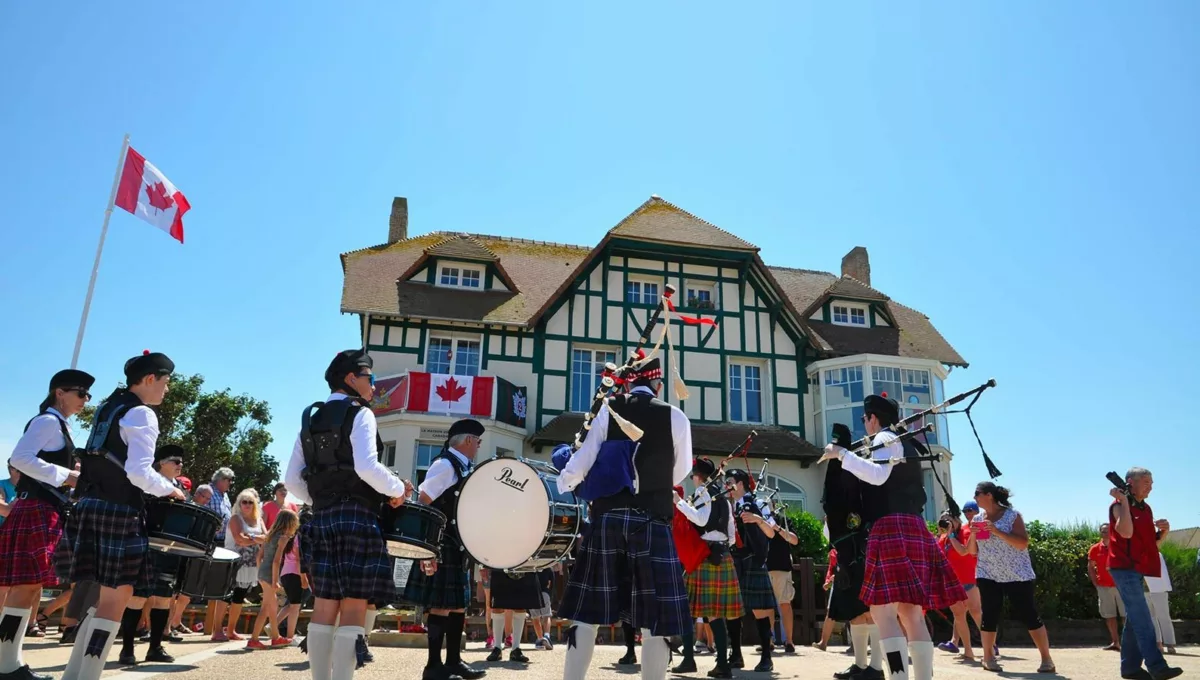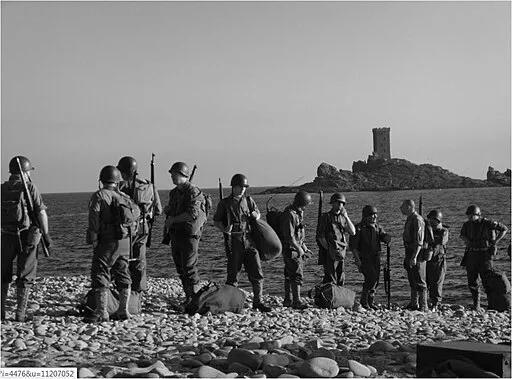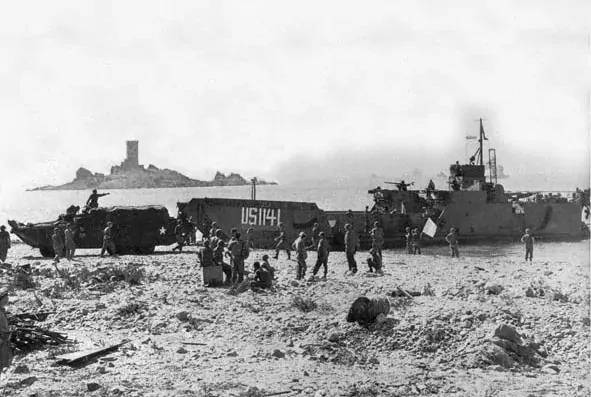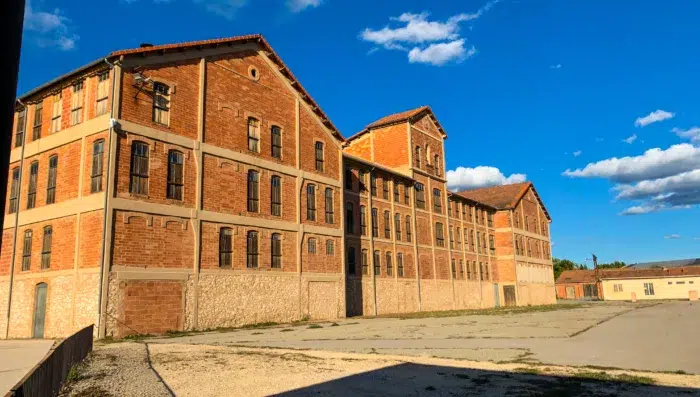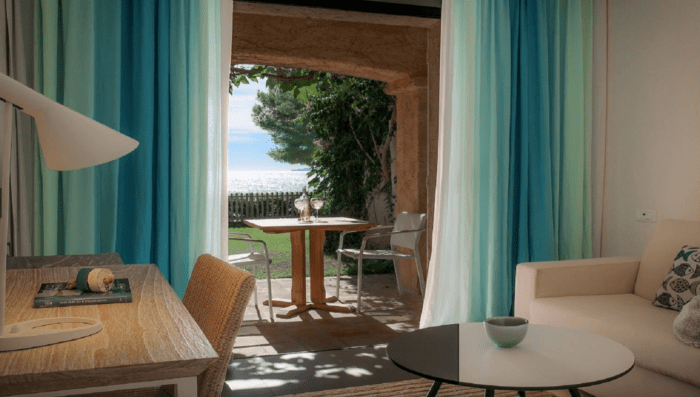Are you a Canadian World War history buff planning a trip to France? Immerse yourself in the rich legacy of Canadian bravery and sacrifice by following the Canadian Route of Remembrance. This unforgettable itinerary takes you to the very battlefields where Canadian soldiers played pivotal roles in both World Wars.
This historic route winds through northern France, encompassing poignant memorials, preserved trenches, and informative museums. Walk the same grounds where Canadian troops secured key victories, stood strong against overwhelming odds, and forever changed the course of history.
Join us as we delve into the details of this commemorative journey.
Canadian World War I Sites & Museums in Northern France
Canada played a pivotal role in the First World War, and Northern France bears witness to the courage and sacrifice of its soldiers. Here are some key sites you can visit to learn more about Canada’s WWI experience:
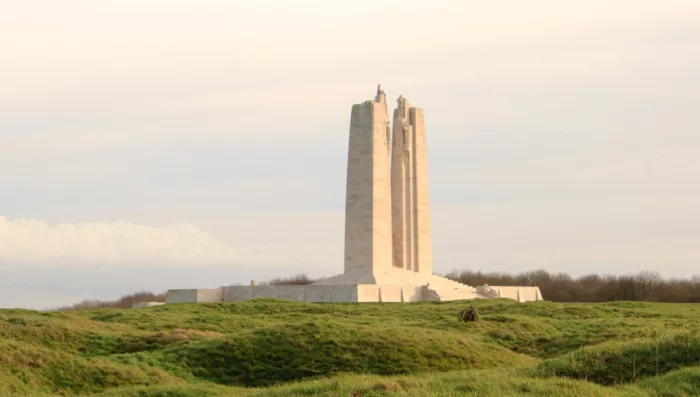
Vimy Ridge
Vimy Ridge offers a powerful experience for visitors seeking to learn about Canada’s role in World War I. The iconic Canadian National Vimy Memorial towers over the Lens Plain, marking the very site of the pivotal 1917 battle. Dedicated in 1936, it commemorates the over 66,000 Canadians who lost their lives in the war.
To delve deeper, the Visitor Education Centre, opened in 2017, utilizes multimedia exhibits to explore Canada’s involvement in the war, from its beginnings to its lasting impact. Finally, free guided tours led by Canadian university students bring the battlefield to life.
Explore the preserved trenches and underground tunnels that played a crucial role in the Canadian victory, and visit the military cemeteries to pay your respects to the fallen soldiers. Vimy Ridge offers a profound and moving tribute to Canadian bravery and sacrifice.
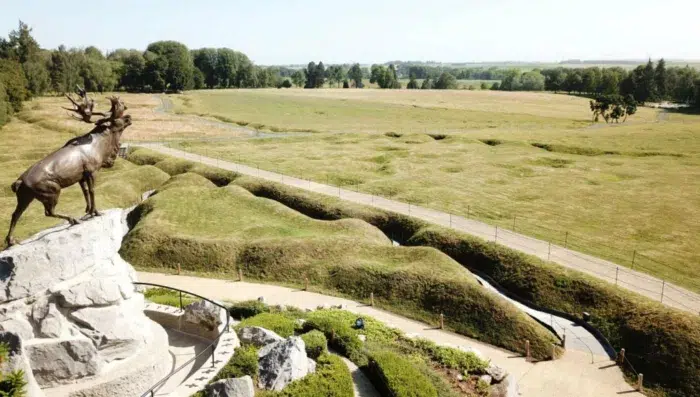
Beaumont-Hamel Newfoundland Memorial
The Beaumont-Hamel Newfoundland Memorial offers a poignant and immersive experience. Atop a hill overlooking a meticulously preserved trench network stands the Royal Newfoundland Regiment Memorial, a bronze caribou symbolizing the enduring spirit of its soldiers. This unique site allows visitors to walk through the very trenches where soldiers fought, providing a powerful and visceral connection to the realities of trench warfare.
Other WWI Sites
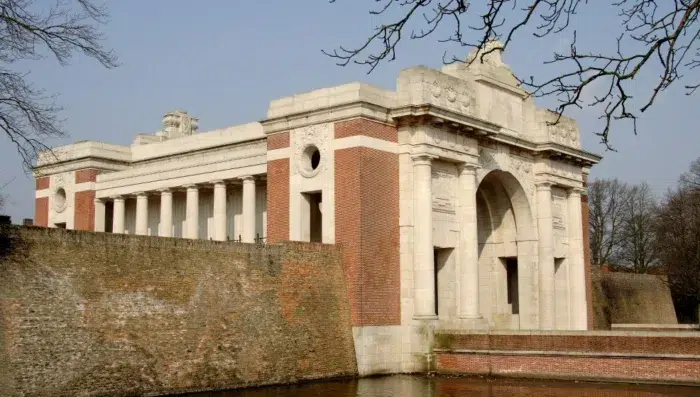
For history buffs seeking a unique perspective, Wellington Quarry near Arras awaits. Descend into this “secret city” used by over 20,000 Commonwealth soldiers to prepare for the Battle of Arras, and imagine the immense undertaking that preceded the offensive.
Scattered throughout the region lie the Remembrance Trail a series of memorials honoring fallen soldiers. Pay your respects at the Monument of the 37th British Division, the Scottish Highlanders’ Cross, and the New Zealand Memorial, each a poignant reminder of the war’s global impact.
Just across the border in Belgium lies Ypres, a town forever etched in Canadian memory. Here, inexperienced Canadian troops faced a baptism by fire during the brutal battles of Ypres. Explore the Ypres Salient battlefield and the haunting Menin Gate Memorial, where every evening the Last Post is sounded in remembrance of the missing.
Where To Stay in Northern France
Hôtel Louvre-Lens 4*

Only a 15-minute drive away from Vimy Ridge, the Hôtel Louvre-Lens blends restored miners’ cottages with modern comfort. Located opposite the Louvre-Lens Museum, it’s a perfect base to explore WWI sites and regional heritage. After a day of exploration, relax and savor innovative regional cuisine by Chef Kasprik.
Canadian World War II Sites & Museums in Normandy
Normandy played a crucial role in the liberation of Europe during World War II, and Canadian troops were at the forefront of the Allied invasion. Here are some key sites you can visit to learn more about Canada’s contribution to D-Day and the Battle of Normandy:
Juno Beach: Canadian D-Day Glory
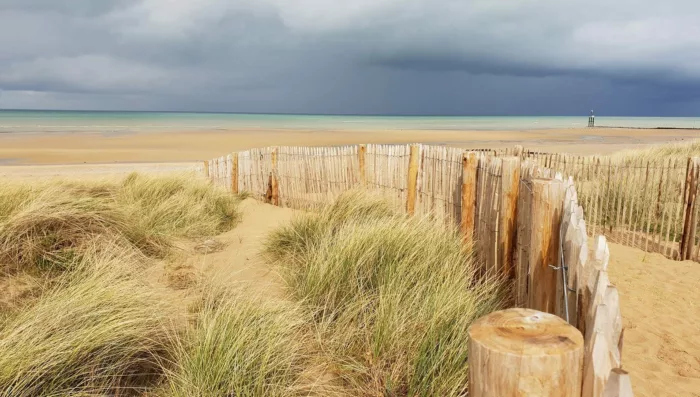
Juno Beach, on France’s northwest coast, signifies Canadian triumph in WWII. Here, Canadian troops were the first Allied forces to liberate a house on D-Day. This house, still standing as Canada House, marks the day’s significance. Dive deeper at the Juno Beach Centre, the only Canadian museum on the Normandy beaches. Explore Canada’s wartime efforts, both military and civilian, through interactive exhibits and artifacts.
Juno Park (Courseulles-sur-Mer) offers a glimpse into the D-Day defenses. Explore the remnants of the Atlantic Wall, including concrete fortifications and artillery, for a deeper understanding of the challenges faced by the Canadian troops.
Canadian War Cemetery Reviers/Bény-sur-Mer), a few kilometers inland, honors over 2,000 Canadians who fought for Juno Beach. A somber yet significant stop, it pays tribute to their sacrifice.
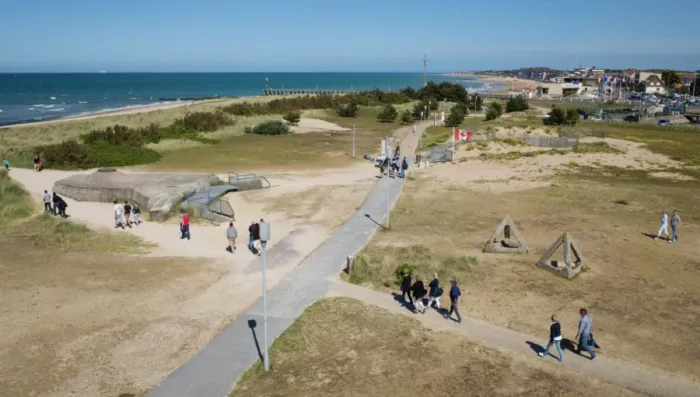
Dieppe: A Lesson Learned
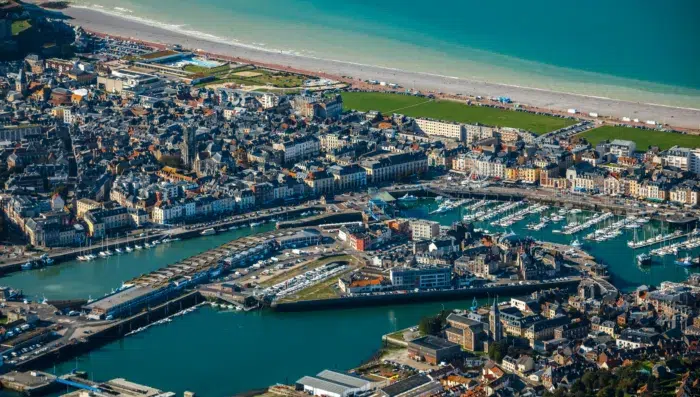
Further up the coast of Normandy lies Dieppe, a location etched in Canadian memory for a different reason. The 1942 Dieppe Raid, though a tactical failure, proved a crucial learning experience. It exposed weaknesses in Allied planning, paving the way for the meticulous planning and overwhelming force used during D-Day. While resulting in heavy casualties, Dieppe also demonstrated Allied resolve and forced the Germans to divert resources. The Dieppe Raid Memorial honors the Canadians who participated in this pivotal operation.

Vertus Canadian Military Cemetery (Hautot-sur-Mer) honors over 950 fallen soldiers, including 707 Canadians. Pay your respects to those who fought in Operation Jubilee.
Beaches of the Côte d’Albâtre (Puys, Pourville, Varengeville-sur-Mer): Take a boat trip and explore the scenic beaches where Operation Jubilee unfolded.
Where to Stay in Normandy
Château d’Audrieu

Château d’Audrieu, a luxurious 18th-century chateau 30 minutes from Juno Beach, beckons. Relax amidst 25 hectares of gardens, woodlands, and a pool. This meticulously restored historical monument offers a captivating blend of history and modern comfort.
French Side Travel promises an unforgettable journey, one that blends remembrance with cultural immersion. Speak with our experts today and let’s craft your perfect Canadian Remembrance Route itinerary. Walk in the footsteps of heroes, honor the past, and discover the enduring spirit of Canada’s brave soldiers.

